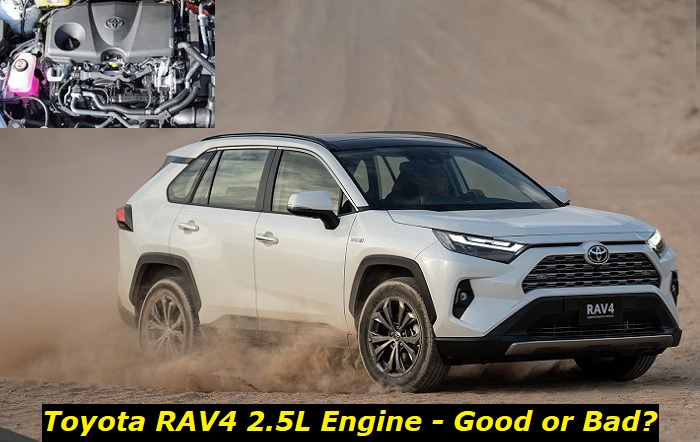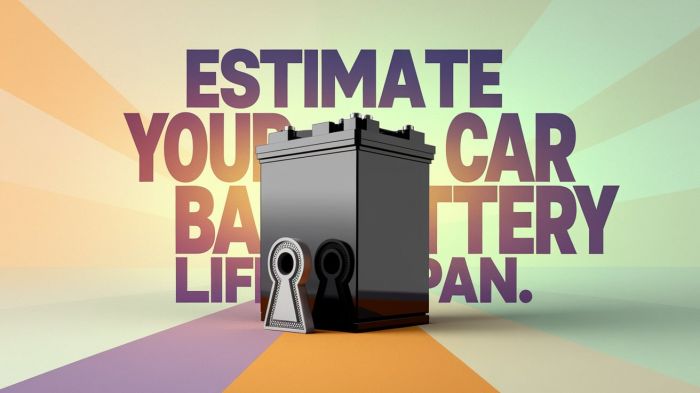The new 2022 Toyota RAV4 engine is a 2.5L 4-cylinder that has been met with mixed reactions. Some drivers love the functionality, longevity, and fuel efficiency it offers, while others have had problems with the lack of horsepower and other issues.
In this blog post, we'll take a closer look at the RAV4 2.5L A25A-FKS base engine to help you decide if it's right for you. We'll also provide some specs on the engine so that you can see what you're getting yourself into!

Key features and my opinion about the engine
- Production years:2017-now
- Average lifespan of A25A-FKS:160,000-180,000 miles
- Fuel supply type:combined injection D4-S (direct + port)
- Power range:200-210 hp
- Fuel efficiency:good
- Engine block material:aluminum
- Engine reliability score:medium
- The most common problems:noisy work, EGR cooler leaks, EGR valve getting stuck, VVTi problems.
2022 Toyota RAV4 Features
The Toyota RAV4 is a compact SUV that first hit the market in 1994. The fifth generation of the RAV4 was unveiled in 2018, and the 2022 model features a number of refinements.
The most notable change is the addition of an advanced touchscreen infotainment system, which offers enhanced connectivity and a sleek, user-friendly interface. Other new features for the 2022 RAV4 include LED headlights, an updated grille design, and additional safety features, such as blind spot monitoring and lane departure warning.
With its spacious interior and impressive list of standard features, the RAV4 is sure to continue its tradition of being one of the most popular SUVs on the market.
The base model comes standard with front-wheel drive, but all-wheel drive is available as an option. The vehicle has a towing capacity of 1,500 lbs. The base model has a starting MSRP of $26,975, making it one of the most affordable SUVs. With its stylish design and high functionality, the RAV4 is sure to appeal to a wide range of buyers.
2022 Toyota RAV4 2.5L Base Engine Specs
- Overview
The all-new 2022 Toyota RAV4 is powered by a 2.5L A25A-FKS Dual Overhead Camshaft four-cylinder engine with Dynamic Force, D-45 injection, and Dual Variable Valve Timing with intelligence (VVT-i) features. The engine offers three drive modes: Eco, NORMAL, and SPORT.
- Dynamic Force
The RAV4 has undergone several redesigns over the years, and the latest model features the A25A Dynamic Force engine, which is one of the newest of Toyota's A25 family of Dynamic Force engines.
The Dynamic Force design improves the engine's thermal efficiency from roughly 33% to 41%. It also features an 8-speed automatic transmission, which helps to improve fuel economy. As a result, the 2022 RAV4 is more efficient than ever before.
- Dual Variable Valve Timing with intelligence (VVT-i)
This system helps to optimize engine performance and fuel efficiency. VVT-i adjusts the timing of the intake and exhaust valves in order to improve engine breathing. The result is a more efficient engine that produces less emissions. In addition, VVT-i helps to improve engine response time, making it easier for the RAV4 to accelerate.
This technology also helps to improve fuel economy very significantly. As a result, VVT-i is an important part of what makes the Toyota RAV4 a reliable and efficient SUV.
- Horsepower and Torque
The engine produces up to 203 hp @ 6,600 rpm and 184 lb.-ft. of torque @ 5,000 rpm.
- Compression Ratio
The compression ratio of the 2022 Toyota RAV4 engine is 13.0:1. The compression ratio of an engine is the ratio of the volume of the cylinder when the piston is at the bottom of its stroke to the volume of the cylinder when the piston is at the top of its stroke.
A higher compression ratio means that more air and fuel can be forced into the cylinder, resulting in more power when the piston is compressed. A compression ratio of 13.0:1 is considered high compression, and engines with this ratio typically produce more power than those with a lower compression ratio.
However, high-compression engines can also be more difficult to start and may require premium fuel for optimal performance. Therefore, consider your needs and whether you are willing to make any sacrifices for extra power.
- Induction System
The engine includes (D-4S) Dual-Injection (Direct-Injection and Port-Injection) EFI with Electronic Throttle Control System with intelligence (ETCS-i). The D-4S system injects fuel directly into the combustion chamber during the compression stroke while also port-injecting fuel into the intake port.
This dual-injection system provides accurate metering of fuel, resulting in improved combustion and reduced emissions. The ETCS-i system controls throttle operation based on input from various sensors, including engine speed, vehicle speed, and accelerator pedal position.
This allows for precise control of engine power and torque, providing a smoother and more efficient driving experience. These two technologies combined provide significant benefits over traditional injection systems, making them an ideal choice for modern engines.
- Coolant System
The engine's coolant system features an electric water pump (instead of a mechanical water pump) coupled with a coolant distribution valve that prioritizes where the coolant needs to go. This innovative system improves thermal efficiency and generally works really well.
- Emission Rating
The 2022 Toyota RAV4 is ranked as an Ultra Low Emission Vehicle (ULEV). A ULEV is a vehicle with very low emissions, typically producing less than 75 grams of carbon dioxide per kilometer. ULEVs are an important part of reducing air pollution and mitigating climate change.
Many countries are encouraging the use of ULEVs through financial incentives, such as tax breaks or subsidies. In some cases, ULEVs may be exempt from certain traffic restrictions, such as congestion charges or Low Emission Zones. Therefore, this engine can provide you with some financial benefits besides the pleasure of riding your Toyota RAV4.
In addition to its improved fuel economy and other awesome engine features, the RAV4 also offers a comfortable ride and plenty of cargo space. For all these reasons, RAV4 is still one of the best compact SUVs on the market.
Engine Longevity
The Toyota RAV4 is one of the most popular SUVs on the market, and for a good reason. It offers a great blend of comfort, utility, and style. And for 2022, Toyota is offering a new base engine option: a 2.5L four-cylinder. This engine is more powerful than the previous one, and it also offers better fuel economy. But what about longevity? How will this new engine hold up over the long run?
The answer, in short, is that it should do just fine. The 2.5L A25A Dynamic Force is a very reliable engine, and it has a track record of being extremely durable.
In fact, many Toyota RAV4s with this engine have gone well over 250,000 miles without any major issues. So if you're looking for an SUV that will last you for many years to come, the RAV4 should definitely be at the top of your list.
2022 Toyota RAV4 Engine Problems
- Coolant System Issues
Some drivers have reported problems with various elements of the 2022 Toyota RAV4 coolant system, such as the thermostats and the coolant flow valves. The coolant valve issue is not really a big deal - you can simply replace it.
However, it is important to note that, all of a sudden, you can get this message on the center display that says "engine maintenance required." This message does not go away - it's always there while there is no "check engine" light on. What this message means is that there has been some engine malfunction that is not an emissions failure.
The "check engine" light is not activated because it was designed to respond to emissions failures only. Therefore, you have to check for codes in order to know why that message is there.
One of the most common reasons why the "engine maintenance required" message comes on is the coolant switching valve or the flow valve that gets stuck and sets that code.
- Oil System Problems
The 2022 RAV4 2.5L base engine has a very sensitive oil system. It has a variable pump that can change the speed, and it's very sensitive to the kind of oil you put in. A common recommendation for these engines is "always stick with the oil."
Furthermore, due to the fact that this engine is tightly sealed and because of the way its oil system works, you can build excessive moisture in this engine. What ends up happening is that this moisture doesn't just collect in the oil cap - you get this moisture in the oil, and there is enough of it to make the oil milky white.
If left in the engine, such oil will start corroding different stuff inside. Therefore, you should check the oil quite frequently and change it as soon as it starts turning white. This problem is especially nasty during the cold weather. Make sure to change your oil every 6 months or 5,000 miles, and you are not going to have any problems with this engine.
- Transmission Issues
The 2022 Toyota RAV4 2.5L base engine is also notorious for some transmission problems. Customers have been reporting that their vehicles have been hard to shift and that the shifting has been strange and erratic. Some customers have also reported that their vehicles have stalled while in motion. Therefore, Toyota drivers are advised to take their vehicles to a dealer for a free inspection and, if necessary, a free repair.
Conclusion
The 2022 Toyota RAV4 base engine is a 2.5L A25A-FKS that puts out around 200 horsepower. The engine is designed to last longer than ever before, and a lifespan of up to 300,000 miles has already been confirmed.
There might be some problems with the coolant and oil systems, but they are less severe compared to previous RAV4 models and similar SUVs. So whether you're looking for a family SUV or something for your weekend getaways, the all-new RAV4 is sure to please!
About the authors
The CarAraC research team is composed of seasoned auto mechanics and automotive industry professionals, including individuals with advanced degrees and certifications in their field. Our team members boast prestigious credentials, reflecting their extensive knowledge and skills. These qualifications include: IMI: Institute of the Motor Industry, ASE-Certified Master Automobile Technicians; Coventry University, Graduate of MA in Automotive Journalism; Politecnico di Torino, Italy, MS Automotive Engineering; Ss. Cyril and Methodius University in Skopje, Mechanical University in Skopje; TOC Automotive College; DHA Suffa University, Department of Mechanical Engineering






Add comment